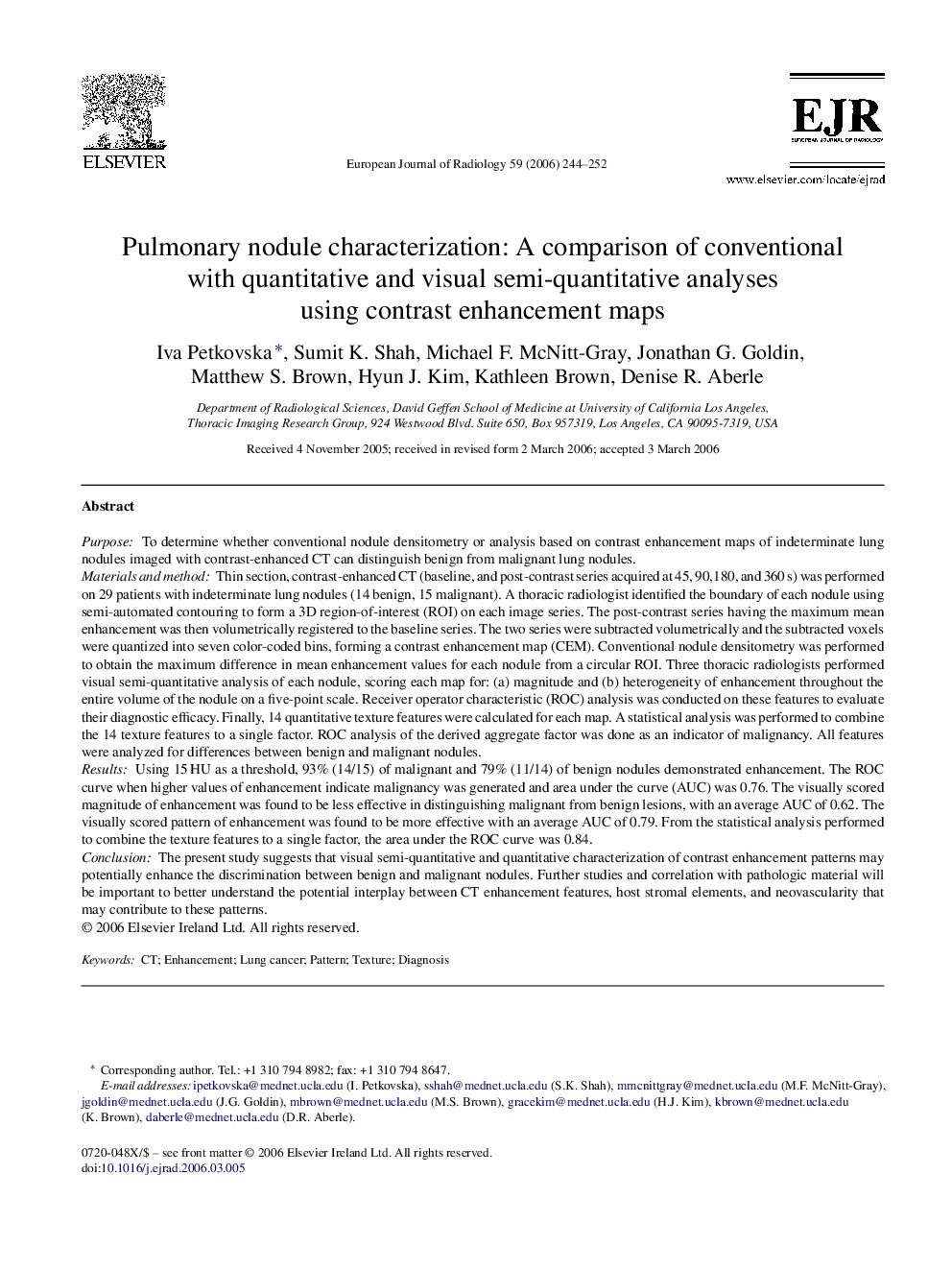| کد مقاله | کد نشریه | سال انتشار | مقاله انگلیسی | نسخه تمام متن |
|---|---|---|---|---|
| 4228712 | 1609862 | 2006 | 9 صفحه PDF | دانلود رایگان |

PurposeTo determine whether conventional nodule densitometry or analysis based on contrast enhancement maps of indeterminate lung nodules imaged with contrast-enhanced CT can distinguish benign from malignant lung nodules.Materials and methodThin section, contrast-enhanced CT (baseline, and post-contrast series acquired at 45, 90,180, and 360 s) was performed on 29 patients with indeterminate lung nodules (14 benign, 15 malignant). A thoracic radiologist identified the boundary of each nodule using semi-automated contouring to form a 3D region-of-interest (ROI) on each image series. The post-contrast series having the maximum mean enhancement was then volumetrically registered to the baseline series. The two series were subtracted volumetrically and the subtracted voxels were quantized into seven color-coded bins, forming a contrast enhancement map (CEM). Conventional nodule densitometry was performed to obtain the maximum difference in mean enhancement values for each nodule from a circular ROI. Three thoracic radiologists performed visual semi-quantitative analysis of each nodule, scoring each map for: (a) magnitude and (b) heterogeneity of enhancement throughout the entire volume of the nodule on a five-point scale. Receiver operator characteristic (ROC) analysis was conducted on these features to evaluate their diagnostic efficacy. Finally, 14 quantitative texture features were calculated for each map. A statistical analysis was performed to combine the 14 texture features to a single factor. ROC analysis of the derived aggregate factor was done as an indicator of malignancy. All features were analyzed for differences between benign and malignant nodules.ResultsUsing 15 HU as a threshold, 93% (14/15) of malignant and 79% (11/14) of benign nodules demonstrated enhancement. The ROC curve when higher values of enhancement indicate malignancy was generated and area under the curve (AUC) was 0.76. The visually scored magnitude of enhancement was found to be less effective in distinguishing malignant from benign lesions, with an average AUC of 0.62. The visually scored pattern of enhancement was found to be more effective with an average AUC of 0.79. From the statistical analysis performed to combine the texture features to a single factor, the area under the ROC curve was 0.84.ConclusionThe present study suggests that visual semi-quantitative and quantitative characterization of contrast enhancement patterns may potentially enhance the discrimination between benign and malignant nodules. Further studies and correlation with pathologic material will be important to better understand the potential interplay between CT enhancement features, host stromal elements, and neovascularity that may contribute to these patterns.
Journal: European Journal of Radiology - Volume 59, Issue 2, August 2006, Pages 244–252